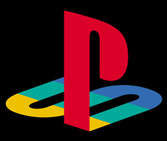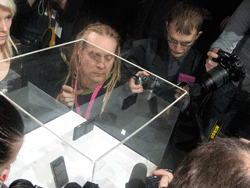 Phones. More phones. Phones that look a lot like iPhones, except for the ones that don’t. Phones that may never show up in the good old US of A. Phones that are full of style, and ones that seem to be devoid of discernible personality. That, in short, was my Monday at Mobile World Congress in Barcelona, where I spent the entire day bopping from press conference to press conference, learning about new handsets from most of the major manufacturers (as well as laptop titan Acer, which announced today that it’s getting into the phone biz).
Phones. More phones. Phones that look a lot like iPhones, except for the ones that don’t. Phones that may never show up in the good old US of A. Phones that are full of style, and ones that seem to be devoid of discernible personality. That, in short, was my Monday at Mobile World Congress in Barcelona, where I spent the entire day bopping from press conference to press conference, learning about new handsets from most of the major manufacturers (as well as laptop titan Acer, which announced today that it’s getting into the phone biz).
I wrote about some of the day’s debutantes as I encountered them, but missed others. And while the show is teeming with journalists who are cranking out a surging sea of stories on all the announcements, I’m not sure if anyone’s trying to put as much as possible in one place.
So here’s a stab at a convenient, concise guide to nearly every new phone I encountered as of Monday evening (I left off a couple of far-off models which Acer mentioned only fleetingly and cryptically). Most of these phones have been announced only in GSM models, except for the two HTCs. Nobody revealed anything about American carriers today, although in some cases you might be able to make educated guesses.
The fact that a spec isn’t mentioned doesn’t indicate a phone doesn’t have it–in some cases, the manufacturers provided something less than full information, and I’m not trying to provide all the ones they did mention (all these phones have basic stuff like Bluetooth, and I stopped short of listing info like their dimensions and the media formats they support). If you know more about any of these models than I do, please speak up.
And one last note: Yes, I know that it’s increasingly tough to judge phones by their hardware specs. In the post-iPhone era, it’s the software that gives a handset much of its functionality and character. I didn’t get to touch most of these phones at all today, and certainly didn’t spend enough time with any of them to come to conclusions about the quality of their interfaces. But even today, specs and other basic facts mean something–and after the jump, I’ll give you plenty of ’em to chew on…
 Apparently Sony Ericsson didn’t get the memo that you’re supposed to charge $200 for high-end Android phones.
Apparently Sony Ericsson didn’t get the memo that you’re supposed to charge $200 for high-end Android phones.

 Here’s a neat idea from Sony Ericsson: Put motion sensors in earbuds, so they automatically stop playback when you pop them out, and resume the music when you put them back in. As someone who hates fumbling for the play button when temporarily removing earbuds — say, to answer a question — I’m interested.
Here’s a neat idea from Sony Ericsson: Put motion sensors in earbuds, so they automatically stop playback when you pop them out, and resume the music when you put them back in. As someone who hates fumbling for the play button when temporarily removing earbuds — say, to answer a question — I’m interested. One of the most cherished Sony rumors surfaced again over the weekend, as Nikkei reported that the company is considering a cellphone and video game hybrid.
One of the most cherished Sony rumors surfaced again over the weekend, as Nikkei reported that the company is considering a cellphone and video game hybrid. Phones. More phones. Phones that look a lot like iPhones, except for the ones that don’t. Phones that may never show up in the good old US of A. Phones that are full of style, and ones that seem to be devoid of discernible personality. That, in short, was my Monday at
Phones. More phones. Phones that look a lot like iPhones, except for the ones that don’t. Phones that may never show up in the good old US of A. Phones that are full of style, and ones that seem to be devoid of discernible personality. That, in short, was my Monday at 
 The
The